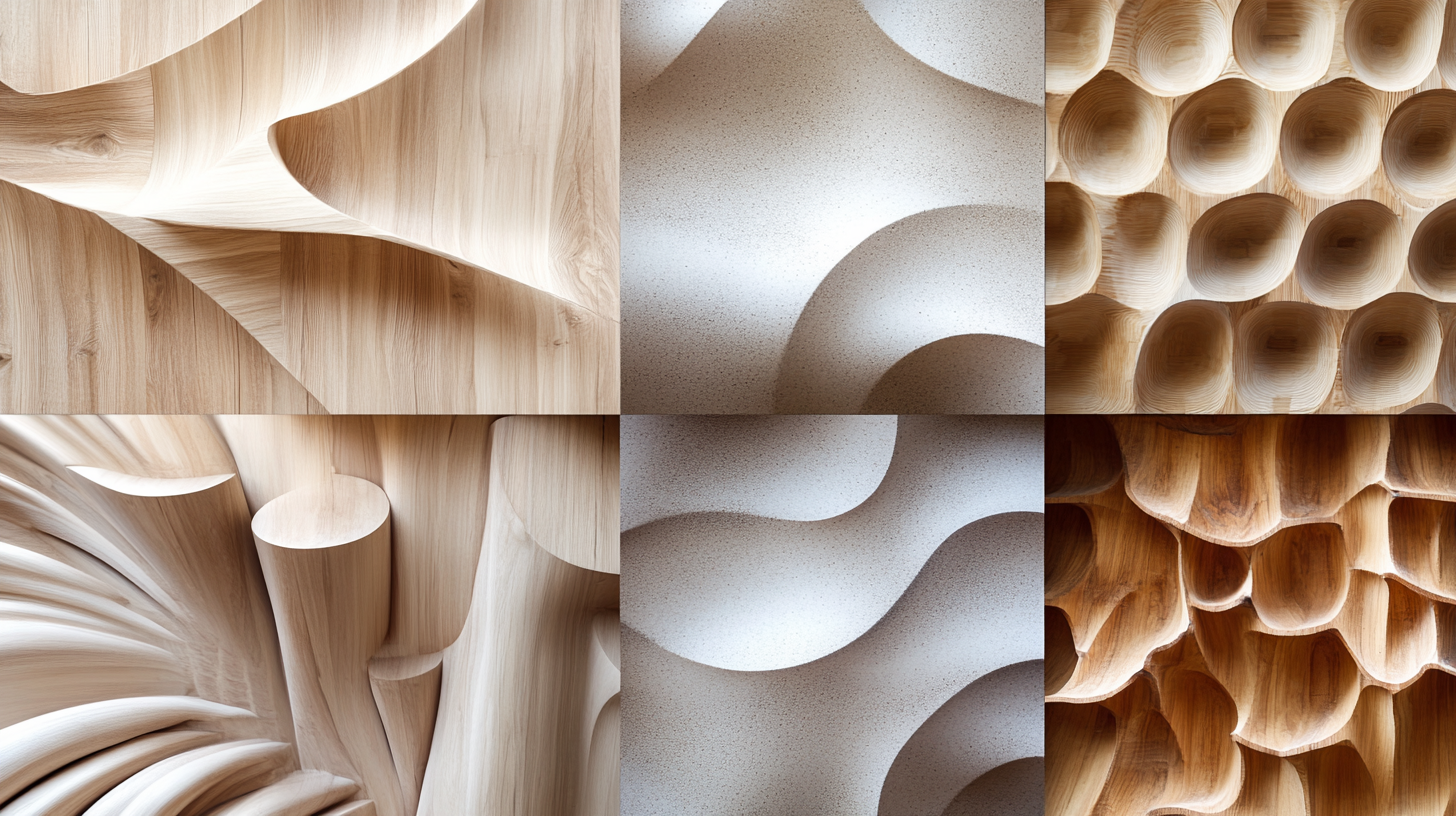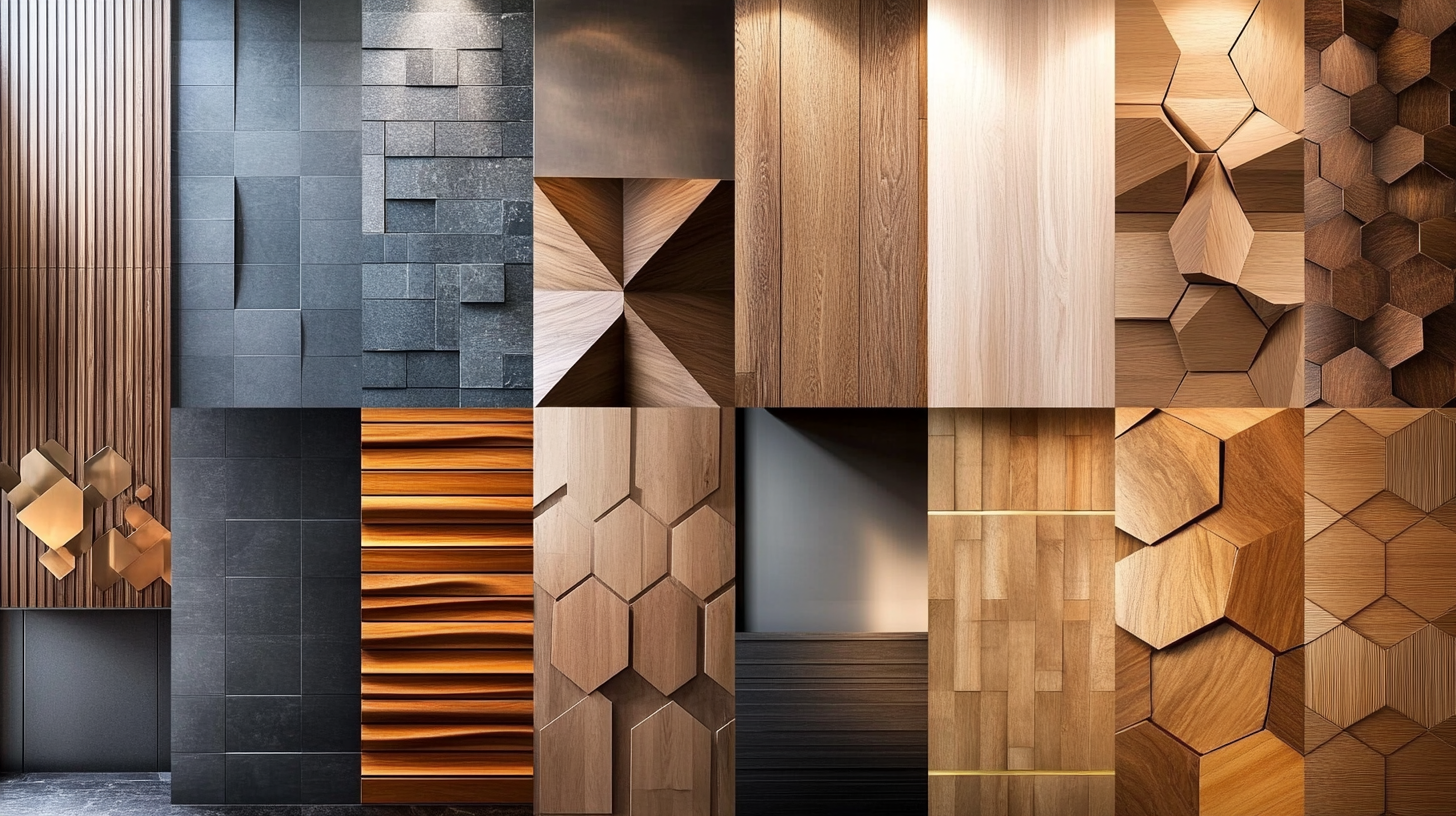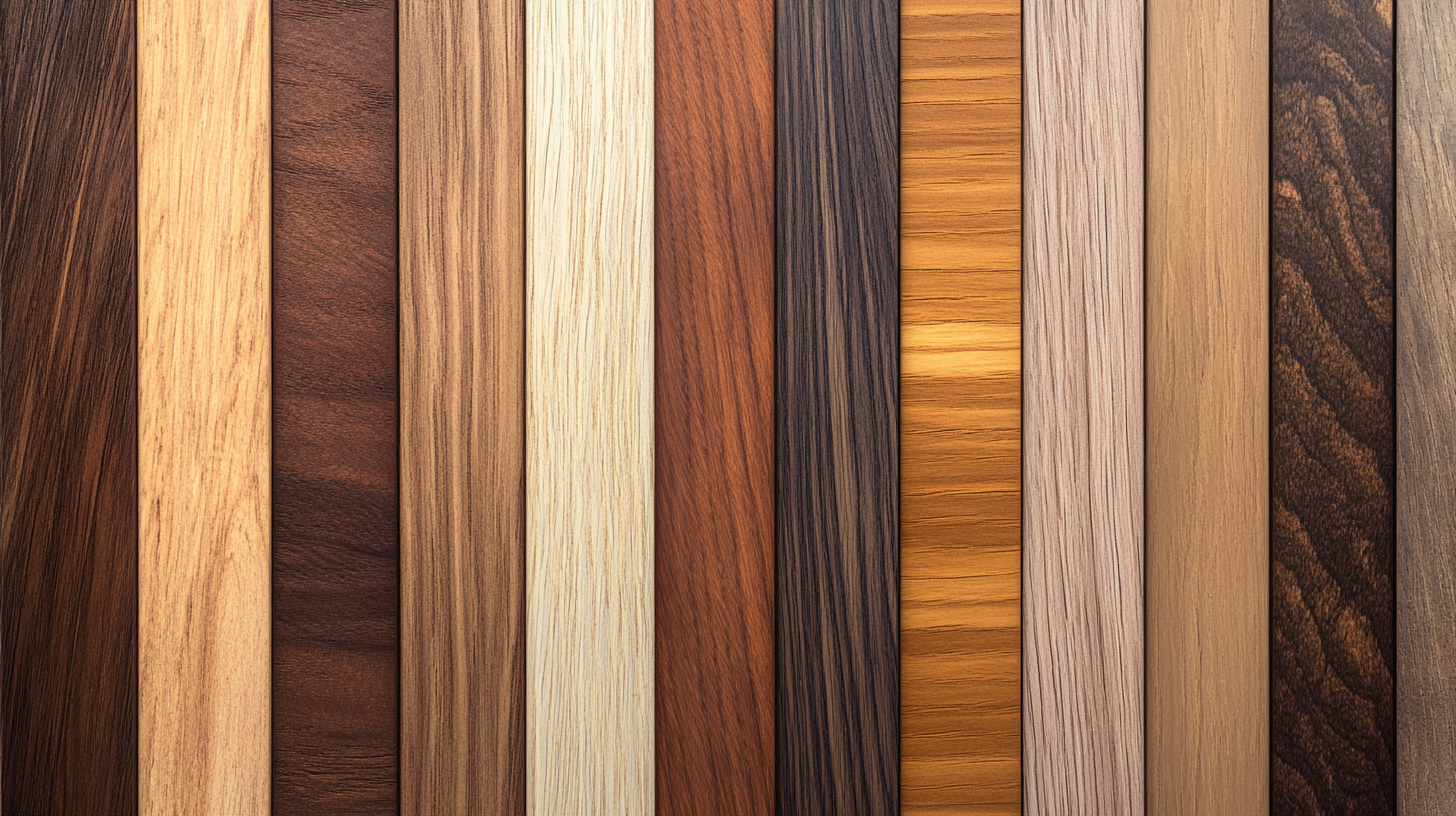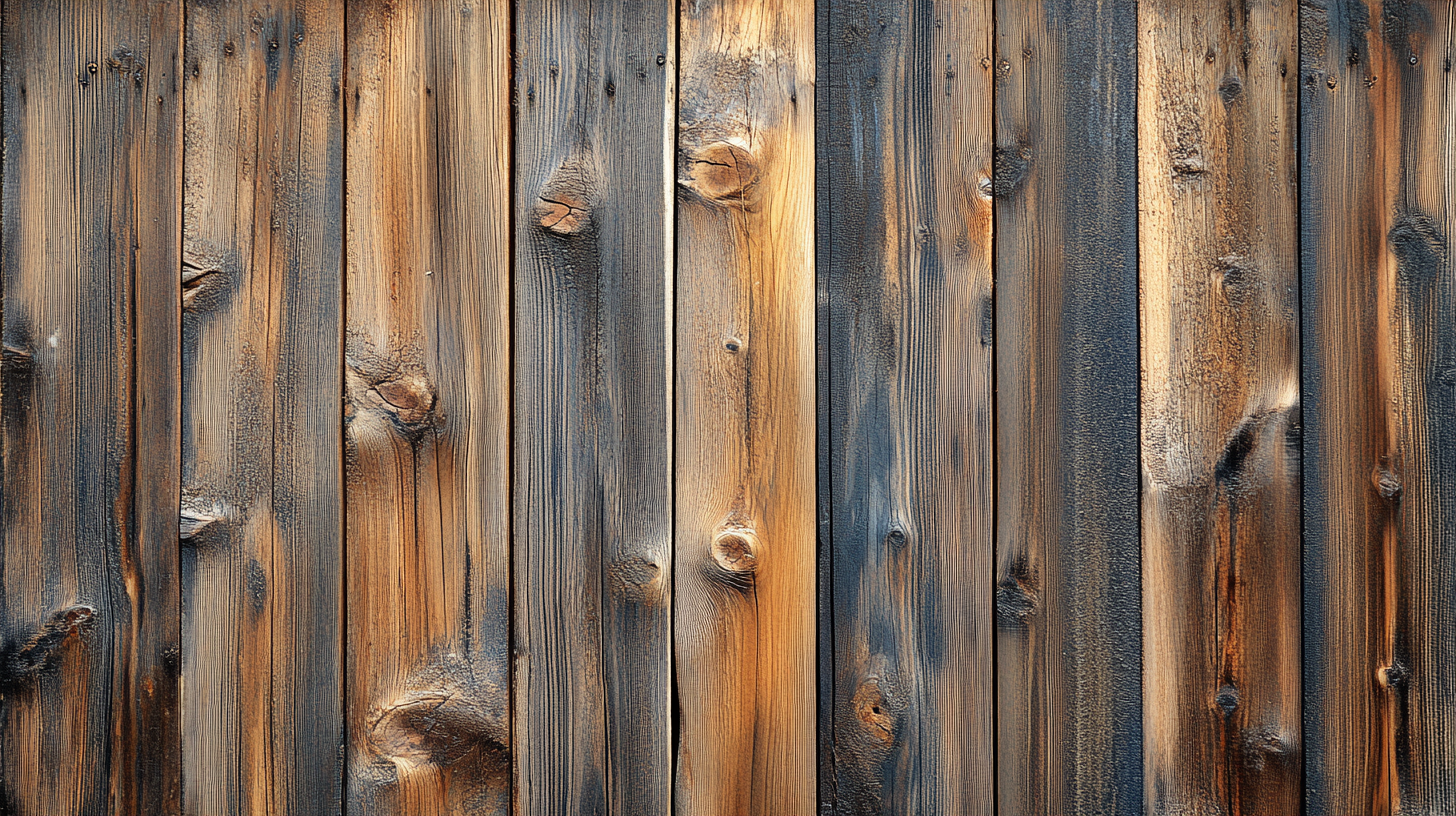Shandong Xiangying New Materials Technology Co., Ltd.
Shandong Xiangying New Materials Technology Co., Ltd.
The burgeoning demand for aesthetic and sustainable building materials has led to a noticeable rise in the popularity of Wood Wall Panels in both residential and commercial spaces. According to a report by Grand View Research, the global wooden wall panel market was valued at approximately $19 billion in 2021 and is projected to expand at a compound annual growth rate (CAGR) of over 5% from 2022 to 2030. This trend is driven by increasing environmental awareness, where homeowners and architects alike are seeking eco-friendly solutions that not only enhance visual appeal but also contribute to sustainability objectives.
Among the various wood wall panel options available, global buyers face the challenge of selecting the right materials that align with their aesthetic preferences, functional requirements, and budget considerations. The diversity in wood types—ranging from hardwoods like oak and maple to softwoods such as pine and cedar—coupled with different finishes and treatment processes, presents a complex landscape for decision-making. Understanding the advantages and disadvantages of each option becomes critical for buyers looking to invest in durable and visually stunning wood wall panels that resonate with contemporary design trends while maintaining a commitment to eco-conscious practices.

When selecting wood wall panels, buyers must consider several key factors to ensure a choice that aligns with their aesthetic and practical needs. One of the primary considerations is the type of wood used, as different species offer varying levels of durability, grain patterns, and colors. Hardwoods like oak and maple provide a robust structure suitable for high-traffic areas, while softer woods, such as pine, deliver a warmer, rustic appearance perfect for cozy settings. Another crucial factor is the finish of the wood panels. This not only affects the visual appeal but also the maintenance required over time. Veneered panels may offer a more budget-friendly alternative with a stylish finish, while solid wood panels, though typically more expensive, bring in timeless elegance and improved durability. Additionally, understanding the environmental impact of sourcing the wood is increasingly vital for today's conscious consumers; opting for sustainably sourced materials can significantly influence purchasing decisions. Moreover, the installation process can vary significantly between different panel options. Some woods come as tongue-and-groove systems that facilitate easier installation, while others might require more technical skills. Evaluating your space, the installation method, and the desired labor intensity can play a crucial role in the decision-making process. Combining these considerations will help global buyers make informed choices that satisfy both their aesthetic goals and functional requirements.

When it comes to selecting the right wood wall paneling, buyers are often torn between natural and engineered wood options. Both types have their own advantages, making a comparative review essential for informed decision-making.
Natural wood panels exude authenticity and a unique aesthetic charm that many homeowners cherish. They can enhance the warmth and character of any space, offering a timeless appeal. Recent discussions on the life cycle assessment of wood products, including bamboo, indicate that natural materials often have a lower Global Warming Potential (GWP) when sourced responsibly. However, the maintenance and potential for biodegradation should be considered, as natural wood can be susceptible to the elements and pests over time.
On the other hand, engineered wood panels provide a sustainable alternative with enhanced durability and stability. Modern engineered wood products, designed to meet climatic changes, are being heralded for their contribution to climate change mitigation. These materials often utilize recycled or fast-growing sources, aligning with global efforts to reduce carbon emissions and land use changes. Additionally, innovations in engineered wood embrace new technologies that enable better performance in terms of insulation, thus addressing concerns regarding plastic pollution in construction.
Ultimately, the choice between natural and engineered wood wall panels will depend on the buyer's priorities, whether it's aesthetic value, sustainability, or practicality. By understanding the strengths and weaknesses of each option, buyers can choose wisely to enhance their spaces while considering environmental implications.

Sustainable wood sourcing has become an essential consideration for eco-conscious buyers looking to enhance their spaces while minimizing environmental impact. The growing demand for wood wall panels made from responsibly sourced materials reflects a broader commitment to sustainability in the interior design industry. As consumers become more educated about the importance of environmental stewardship, they are increasingly drawn to options that prioritize ethical practices in forestry and production.
One of the primary benefits of sustainable wood sourcing is the reduced ecological footprint. Manufacturers that focus on eco-friendly materials often utilize wood from certified sources, such as FSC (Forest Stewardship Council) or PEFC (Programme for the Endorsement of Forest Certification). These certifications ensure that the wood is harvested in a manner that supports forest conservation, promotes biodiversity, and respects the rights of local communities. By choosing wood wall panels from these responsible sources, buyers can contribute to sustainable forestry practices, effectively supporting ecosystem health and durability.
In addition to the environmental advantages, sustainable wood options often boast unique aesthetic qualities that appeal to modern buyers. The character, texture, and coloration of responsibly sourced wood can create stunning visual effects in any interior setting. Furthermore, these materials can often be processed using non-toxic finishes and adhesives, further aligning with the eco-friendly ethos. By opting for these sustainable wood wall panels, buyers can achieve a beautiful, natural look while ensuring their choices support a healthier planet for future generations.

Wood wall panels have emerged as a popular choice for design aficionados seeking the perfect blend of aesthetics and functionality. Their stylistic versatility allows them to seamlessly adapt to various design themes, from rustic farmhouse to sleek modern spaces. Whether you’re aiming for a cozy, traditional ambiance or a minimalist contemporary look, there is a wood panel option that can elevate your interiors.
In a rustic farmhouse setting, reclaimed wood panels add warmth and character, imbuing the space with a sense of history and charm. The natural imperfections and varying textures of these panels highlight the beauty of authenticity, making them ideal for creating a comfy retreat. On the other hand, for those pursuing a more modern design, vertical shiplap panels in a light finish can bring a fresh, airy feel to minimalist spaces. Their simple lines and sleek profiles create an elegant backdrop for contemporary furnishings and decor.
Additionally, wood panels can be stained or painted to match any color palette, offering even more adaptability. For an eclectic or bohemian look, panels can be mixed and matched with different wood types and finishes, showcasing personal style and creativity. Whether used as a statement wall or in subtle accents, the adaptability of wood panels allows homeowners and designers alike to craft spaces that truly reflect their unique vision and lifestyle.
When considering wood wall panel installations, budgeting becomes a crucial factor for global buyers. The costs associated with different types of wood panels can vary significantly based on factors such as type of wood, finish, and installation methods. For instance, hardwood options like oak or walnut often come with a higher price tag due to their durability and aesthetic appeal, making them ideal for premium projects. On the other hand, softer woods like pine or cedar are more budget-friendly alternatives, allowing for a stylish yet economical choice.
Another important aspect of cost analysis is the installation process itself. Professional installation may add substantial labor costs, so it's essential for buyers to take this into account. Some wood panel options are designed for easier DIY installations, which can help reduce overall project expenses. Additionally, considering long-term maintenance costs is vital; while a wood panel may have a lower initial price, ongoing upkeep for certain finishes can add to the total expenditure over time.
In many cases, global buyers need to balance aesthetic preferences with budget constraints. Exploring various wood species and finishes can lead to discovering unique combinations that fit within financial limits. Furthermore, leveraging bulk purchasing discounts or collaborating with suppliers can yield significant savings. Ultimately, a thorough understanding of all these cost factors will empower buyers to make informed decisions when selecting the right wood wall panels for their projects.
